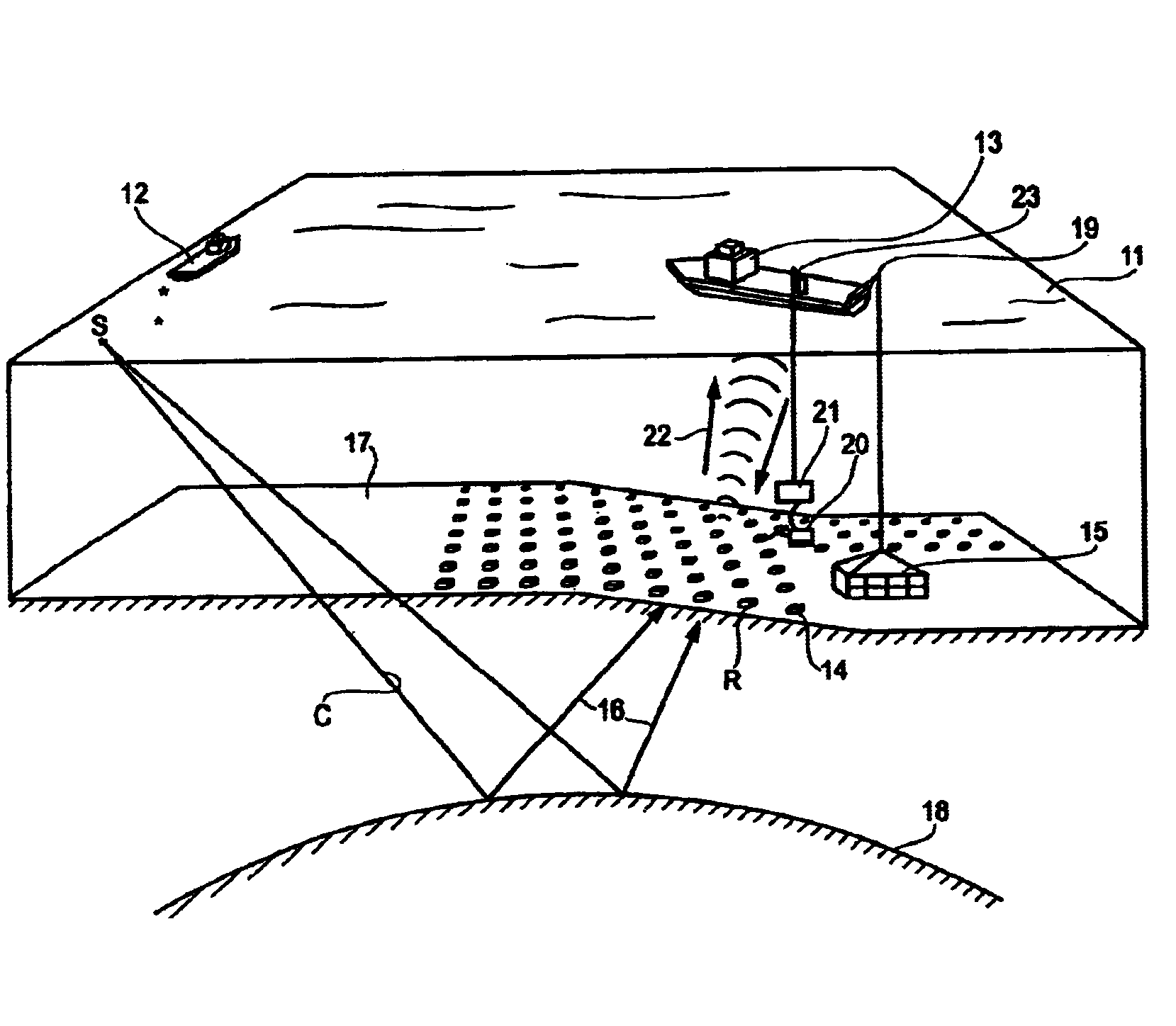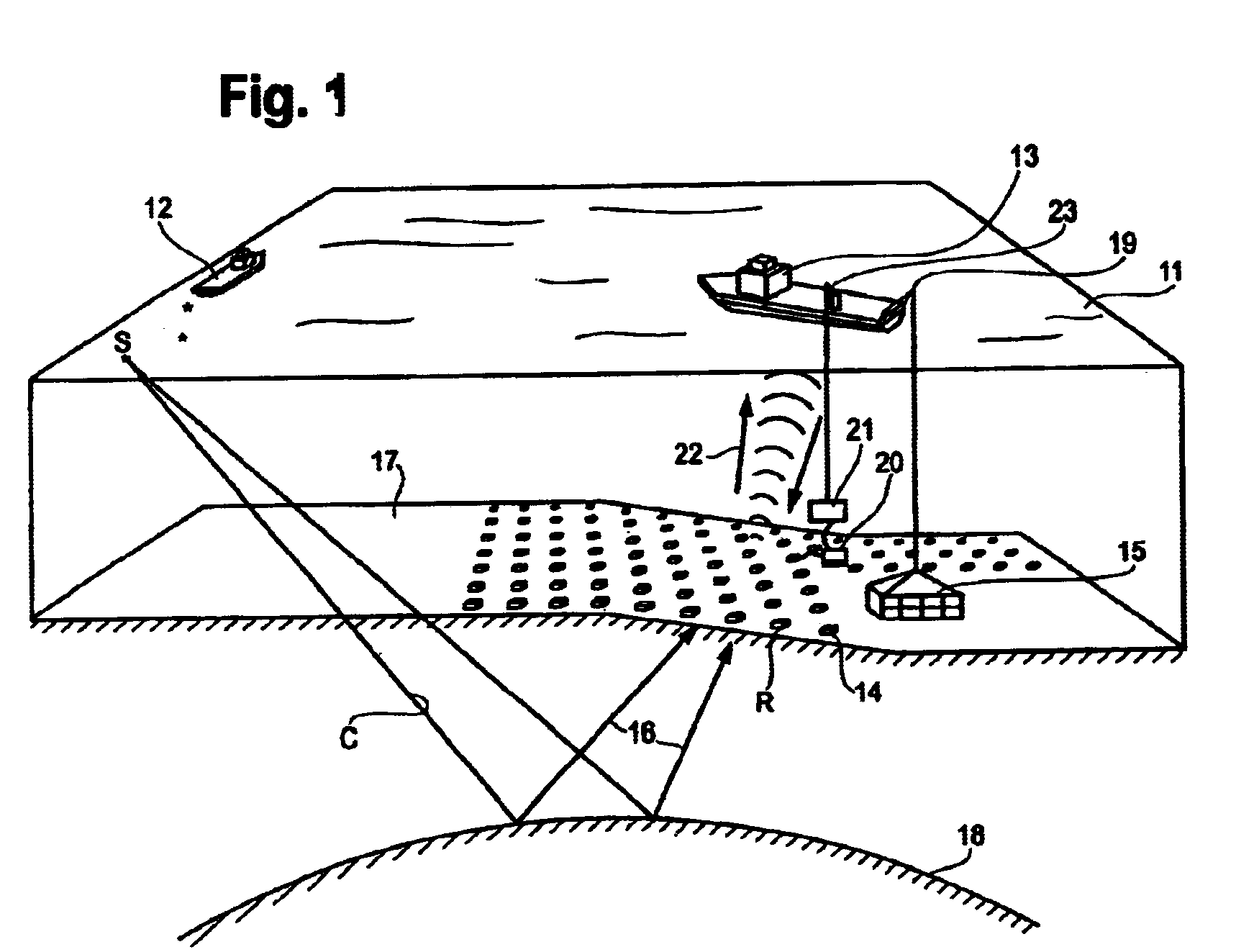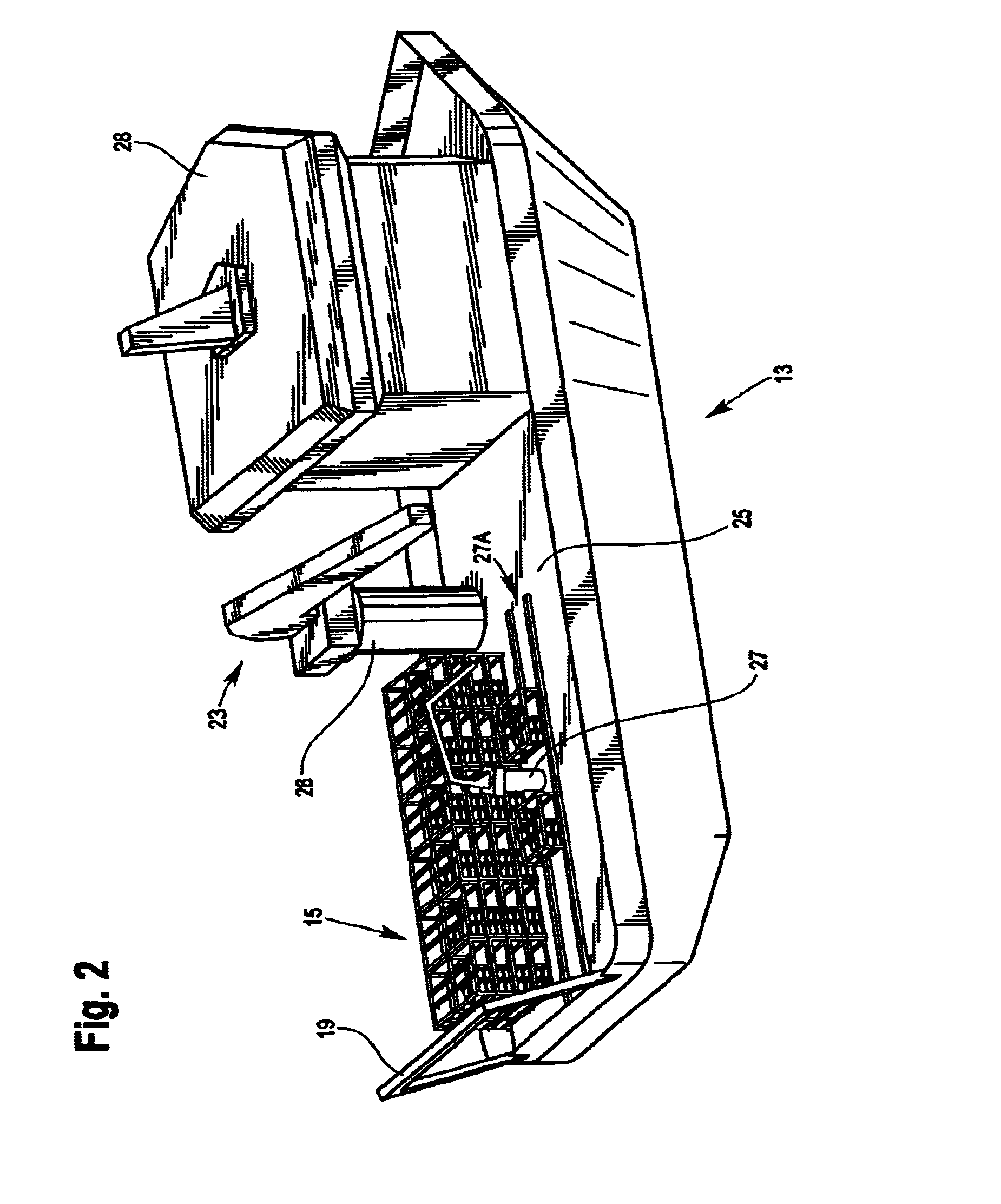Geophysical method and apparatus
a geophysical method and a technology of towed streamers, applied in the direction of instruments, sonic/ultrasonic/infrasonic transmission, transmission, etc., can solve the problems of unable to economically anchor geophones in marine applications, unable to collect seismic data with towed streamers in areas populated with numerous obstacles, and unable to meet the needs of drilling and production platforms, etc., and achieves a cost-effective and high-efficiency loss
- Summary
- Abstract
- Description
- Claims
- Application Information
AI Technical Summary
Benefits of technology
Problems solved by technology
Method used
Image
Examples
Embodiment Construction
[0035]While this invention is susceptible of embodiment in many different forms, there is shown in the drawings, and will herein be described in detail, several specific embodiments of the invention. It should be understood, however, that the present disclosure is to be considered an exemplification of the principles of the invention and is not intended to limit the invention to any specific embodiment so described.
[0036]Before describing the invention in detail, the environment of the invention will be explained.
[0037]A. Surface Vessels
[0038]Two or three vessels (see FIG. 1) can be used in the operation, depending on the number of seismic receiver units needed for the survey. Three different options, with regard to a number of vessels in operation, are suggested.
[0039]With a three vessel operation, two receiver handling vessels 13 and one source vessel 12, there will be sufficient time for one of the handling vessels to perform quality control (QC) on the receiver units during oper...
PUM
 Login to View More
Login to View More Abstract
Description
Claims
Application Information
 Login to View More
Login to View More - R&D
- Intellectual Property
- Life Sciences
- Materials
- Tech Scout
- Unparalleled Data Quality
- Higher Quality Content
- 60% Fewer Hallucinations
Browse by: Latest US Patents, China's latest patents, Technical Efficacy Thesaurus, Application Domain, Technology Topic, Popular Technical Reports.
© 2025 PatSnap. All rights reserved.Legal|Privacy policy|Modern Slavery Act Transparency Statement|Sitemap|About US| Contact US: help@patsnap.com



